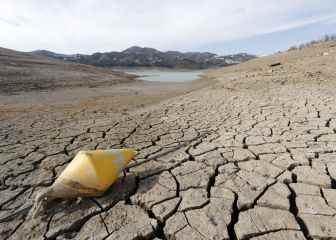Not only has January been the driest month since data is available from 1961, but the fact that water reserves are around 40%, and there are no changes on the horizon or rain forecasts, is causing the voices of alarm before a possible drought this year 2022.
According informs the Ministry for the Ecological Transition and the Demographic Challenge, the Spanish water reserve is at 44.3% of its total capacity and in the last week 14 cubic hectometers have been lost, a very significant and worrying fact.
With the data provided 20 minutes, in October there was 25% less rain than usual; in November, 29% less and in December, 25% less. Since 1988, the hydraulic reserve has only been at a lower level in the year 2018, when it reached 42.12%. Other striking figures were in 2008, at 43.76%; in 1995, when it was at 40.16% of its capacity; in 1993, at 41.36%, in 1992, at 39.79% and in 1989, it was at 42.36%.
Areas that are in serious danger
- Guadalete and Barbate (29.5%)
- Guadalquivir (28.5%)
- Guadiana (30.3%)
- Andalusian Mediterranean (30%)
- Safe (33.8%)
- The Duero basin (49.9%)
- The Tagus account (45.4%)
Areas that are not in danger
There are several areas in Spain that can be quiet right now. The internal basin of the Basque Country is at 95.2% of its capacity. A fact that allows us to face 2022 calmly and not think about water restrictions.
The Eastern Cantabrian basin (82.2%), Western Cantabrian (61.8%), in the Miño-Sil river basin (53.1%), in Galicia Costa (61.8%), in the Tinto, Odiel and Piedras area (74.2%), in the Júcar (54.8%), in the Ebro (65.1%) and in the internal basins of Catalonia (54.9%).
Measures to avoid drought
If the drought were real, and in the spring we had to start considering, if not sooner, how to save water, the most affected will be the farmers. Food cannot be told not to grow, or to be in short supply, so the price will rise. And it is possible that the large irrigated areas will be affected by time constraints and a lower product, and even worse.
In that line, Spain has 437 golf courses, according to data from Golfpark; and can also be affected. Along the same lines, parks and gardens, community and private pools. Because if there is no water, there is no water for leisure, but yes there must be water to eat and drink.
